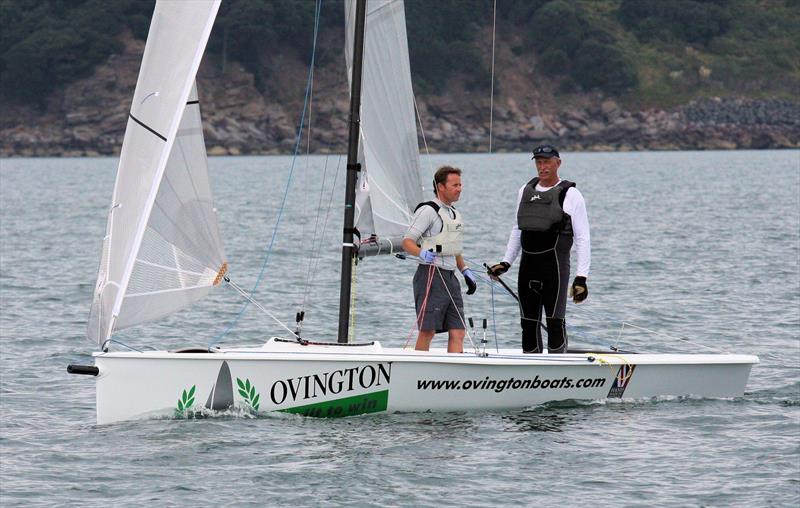
Brian Bennett interview
by Mark Jardine 26 Nov 2014 14:44 GMT
26 November 2014

Brian Bennett sailing during the Ovington VX One Nationals at Torquay © Mark Jardine / YachtsandYachting.com
We talked to Brian Bennett, designer of the VX One sportsboat, during the inaugural UK Nationals held in Torbay at the end of September.
Mark Jardine: What's your reaction to how the first UK nationals went?
Brian Bennett: It's always hard starting a new class, and in a place like the UK where there's such depth of numbers of boats and talent, everyone's vying for the activity. For Ovington, Chris and his team to make a big effort and get the VX started here, it's an important part of our overall equation. I think the event was a great success, no complaints at all really.
MJ: Where are you seeing the fleets growing in the VX class?
BB: We're a couple of years ahead in the States, about 70 boats, and that's growing by about 30-40 boats a year. There are now 18 boats in Australia and 5 in New Zealand which is a new fleet this year - they're just coming into their Spring Series racing now.
MJ: The boat seems to bridge the gap between a dinghy and a keelboat. Was that the aim of the design from the outset?
BB: Our ultimate goal was just to build the perfect race boat. The perfect race boat to me is something that's affordable, manageable, can be towed with a 4-cyclinder car and where the costs of ownership are very low. It's ultimately the most fun boat to race that you can find. What we've sought to do through our years of experience is come back to the grass-roots of what we've enjoyed the most. We wanted a boat that gave a lot of people feedback and could advance their sailing and their racing game. The boat had to be light and lively - it had to be good in light air and outstanding in heavy air and so the model we were trying to create had to be bulletproof, current in terms of design and incorporating all the easy of handling things that people want to see in a boat these days. In some respects I think the VX maybe something that isn't fully understood yet, but I think in time it's going to prove to be a model that is a pretty ideal race platform. It's just a fun day sailor as well - if you want to go for a burn, hit 15 knots and take your family for a sail.
MJ: One of things that was really noticeable during the Nationals with it being such a light wind event was that even in 4 knots the racing was tight. Do you think people will be surprised by its light wind performance?
BB: You can't design a boat to sail effectively in 4 knots. In essence we were sailing all weekend at the very bottom level of what the class has determined where we want to race, which is 5 to 22 knots. I think the net result is that everybody that was on the course thought this boat's really not so bad in the light stuff. The boat is wide and if you sail it flat there's a lot of wetted surface, but if you sail it at its designed heel angle of 6 degrees there's not so much wetter surface.
We were sailing at wind-speed pretty much all weekend. Some days, such as the final day, there was a bit more chop, the other days a little flatter water, but for me it's pleasing to see that it does have good light air performance. It's a little bit of a shame that we didn't get to see what the boat does in 15-20 knots as it's a whole different animal - it totally lights up, so that's the element of it that people are yet to see. I think that the boat's struck a good chord, we've got a good build team with Ovington in the UK and MacKay in New Zealand. I think we've done the groundwork to lay something that is pretty solid moving forwards.
MJ: With projected growth in the various countries, when are you hoping for a first World Championship for the class?
BB: We've just applied to ISAF, so they've got our money. We're probably not going to make it this year - the trouble with criteria for ISAF selection is that you need volume. There are some dispensation clauses but I think we're basically looking at ISAF status next year and looking at our first World Championship in Miami in 2016 all being well, we're already on the way to setting that up. There's some work to do to make sure that we have the fleet numbers in each country, but I'm pretty confident that over the next 8-12 months we'll see that come through.
MJ: Brian, thank you very much for your time.